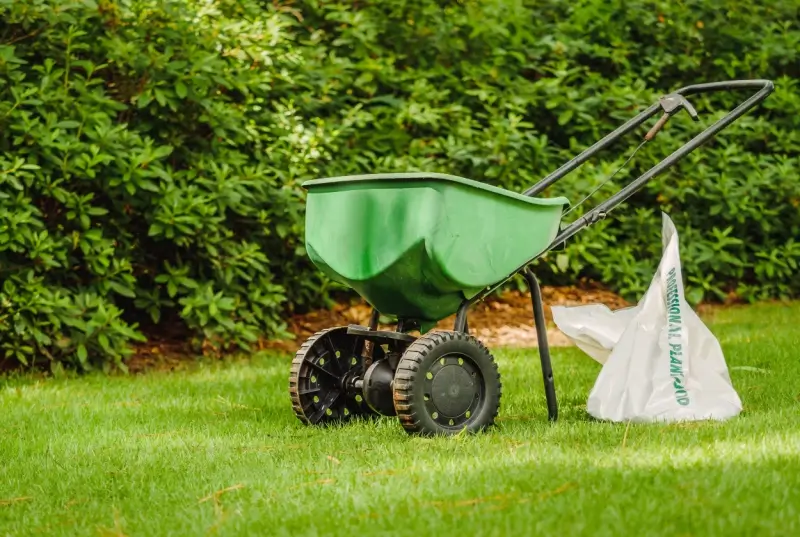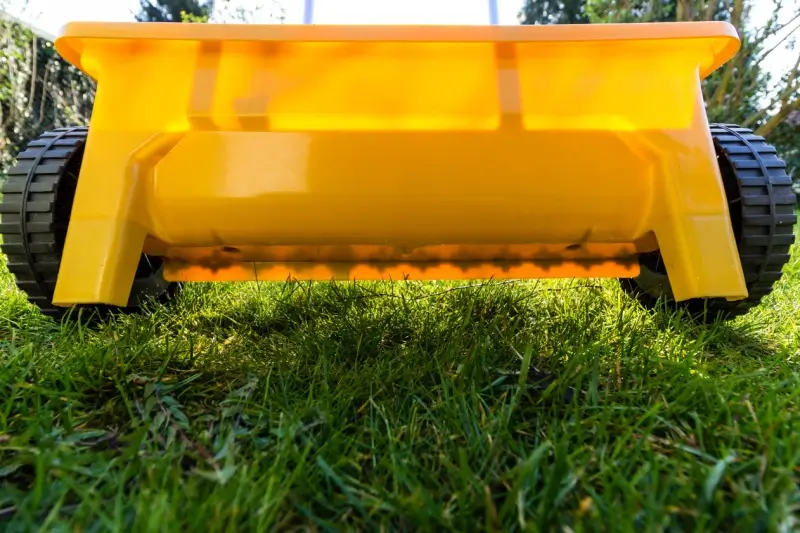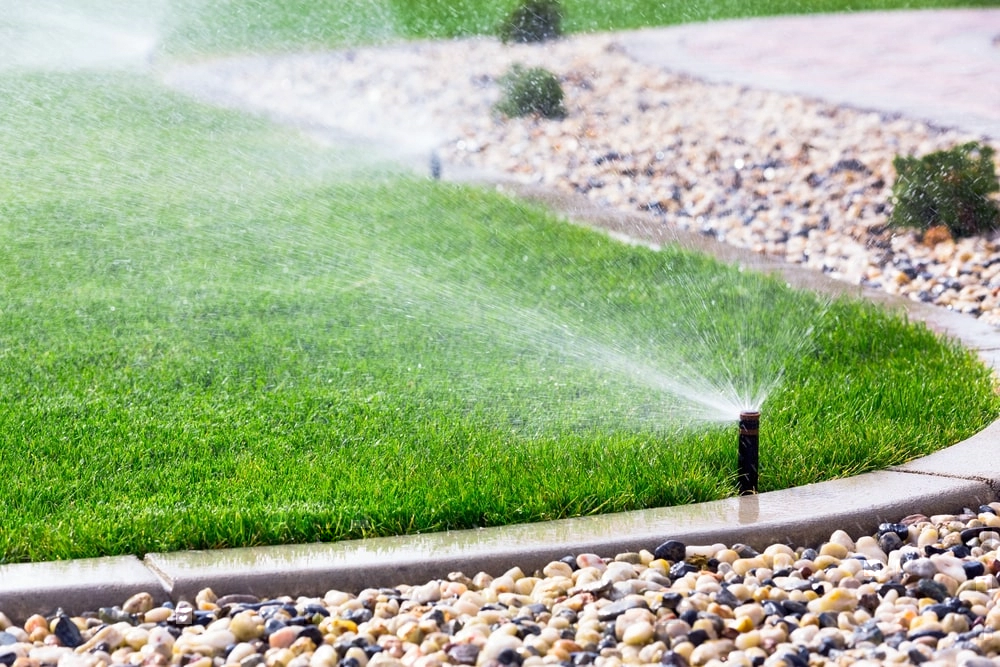What Does Lime Do For Grass?

The pH of your soil plays an important role in the health of your lawn. If your soil pH gets too high or too low, your grass can struggle to thrive. In many parts of the country, including the Eastern United States, the Pacific Northwest, New England, and Appalachia, soil tends to be too acidic. One common solution is to use lime for lawns.
Table of Contents:
What Is Lime for Lawns?
We’re not talking about the green citrus fruit that makes a great addition as a wedge on your margarita or Mexican lager glass. In this context, lime is a popular soil amendment made from ground limestone rock, marble, or chalk.
Lime contains calcium carbonate and magnesium carbonate and can naturally increase a soil’s pH, lowering its level of acidity (or making it more alkaline, for all you science buffs).
Types of Lime
There are two main types of lime for lawns.
- Calcitic lime is made from pure calcium carbonate and is the most common type of lime used as a lawn amendment. It works best in clay soils with high levels of magnesium.
- Dolomitic lime contains calcium carbonate and magnesium carbonate and works best in sandy soils with low levels of magnesium.
Forms of Lime
When you head out to pick up some lime, you might notice you have two different options.
- Lime Pellets are the most popular form of lime for lawns. They’re more affordable than liquid lime and are easier to find at your local lawn care store.
- Liquid Lime: Less popular and more expensive than pelletized lime, liquid lime is prized by some, because it works faster to increase the pH of soil.
What Are the Benefits of Lime Treatment for a Lawn?
To understand the benefits lime can bring to a lawn, it’s critical to know how soil pH impacts the health of grass. All plants have a certain ideal pH zone in which they do best, usually between 6.0 and 7.0. When soil becomes too acidic or too alkaline, grass roots can struggle to absorb important nutrients. Without proper nutrition, your grass can grow weak and thin, and no amount of fertilization will help.
Lime works by reacting to soil particles and neutralizing acidity, creating a healthier environment for your grass.
Greater Nutrient Availability
Lime increases a soil’s pH, helping grass readily absorb important nutrients, including nitrogen, phosphorus, and potassium.
Healthier Microbes
Certain microorganisms are critical to maintaining the health of the soil and any roots in that soil. Like plants, these helpful microbes need a balanced soil pH to thrive. Adding lime, or “liming,” can create a more favorable environment for them.
More Effective Herbicides and Pesticides
Certain herbicides and pesticides can break down more quickly in highly acidic soil, making them less effective in killing off the weeds and insects that can harm your lawn.
When to Apply Lime to a Lawn
Lime works best when applied while grass is actively growing. Consider liming your lawn in the spring or fall. Some added benefits to liming in the fall are that rain and snow can help break down the lime more quickly.
Make sure not to lime if you have rain coming or your lawn is already wet from recent rain. If your lawn is already stressed from something else, like a fungal infection or pest infestation, liming can add more stress and do more harm than good.
With that in mind, we generally recommend liming your lawn every three to five years if you live in a region with acidic soil.
How to Perform Lime Treatment for a Lawn
Think you might need to put lime on your grass? Here are the steps to take.
Test Your Soil

A struggling lawn, increased lawn diseases and pests, and a poor response to fertilization indicate that you might need to add lime to your lawn. The only true way to tell, however, is to test your soil. You can pick up a soil test at most lawn and garden centers. This test will measure your soil’s pH. If the pH is below 6.0, liming may be a good idea.
Aerate and Dethatch Your Lawn

Before you add lime to your lawn, you’ll want to make sure the lime can penetrate your soil. A thick layer of thatch—or dead grass and other debris—could block the lime. Mow your lawn down to about half its usual height, then either rake up the thatch or use a power thatcher to get rid of the thatch.
Next, aerate your lawn. Use an aerator to pull up plugs of soil from your lawn. It will make your yard a little messy, but it will help the lime to absorb more deeply into your soil. We strongly recommend plug or core aeration over spike aeration.
Related Article: Dethatching, Aerating, and Seeding: Bring Your Lawn Back Next Year!
Spread the Lime

Your soil test should help determine how much lime to use on your lawn. The more acidic your soil, the more lime you’ll need to use. If you have pelletized lime, a drop spreader or broadcast spreader are good options for evenly spreading it across your lawn.
For liquid lime, attach a sprayer to your hose. Spray your lawn evenly so all the soil receives the same amount of coverage.
Water Your Lawn

Water your lawn to help the lime seep into your soil. Before watering, make sure to read the directions for your particular type of lime. In some cases, the directions may recommend waiting a certain amount of time.
Kids and pets should stay off the lawn for 24 to 48 hours after liming. Then, it’s a matter of waiting while the lime slowly increases the pH of your lawn.
Hire a Professional for Your Lawn Lime Treatment
Changing your soil’s chemistry isn’t usually a fast process, and lime for lawns is no exception. After you’ve put lime on your grass, it will take several months for your soil’s pH to change. Next year, test your soil again. If the pH is still too high, you may need to do another lime treatment for your lawn.
Does liming seem like a lot of work, or are you unsure if your soil needs lime? Call in the experts. The Grounds Guys® can test your lawn and determine exactly what it needs to thrive. Our local teams understand the soil of your region, and we have lots of experience with adding lime and other amendments to soil. Contact us to find out more.
Using The Grounds Guys comes with our Neighborly Done Right Promise™. We’ll show up on time, in uniform, and ready to work. Whether we’re liming, doing seasonal services, or performing ongoing lawn care, we’ll always do the best job possible.
Request a free estimate for liming today.
 Click to call
Click to call


